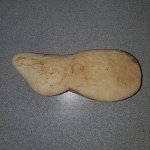Recently I replaced the capacitor in a CMI CC-16E comparitor that would not reliably sort dimes. After the replacement, results improved slightly when using a 2007 dime as the sample coin. However, when I used a high % silver (1956) the comparitor performed flawlessly. No matter what post-'64 dime I used the comparitor was inconsistent but the silvers worked perfectly.
I'm slowly getting up to speed on the workings of the CMI comparitor but this quirk has me baffled . Anyone have any ideas as to why the 16E likes silver as the sample but not a clad?
. Anyone have any ideas as to why the 16E likes silver as the sample but not a clad?
I'm slowly getting up to speed on the workings of the CMI comparitor but this quirk has me baffled
Upvote
0




